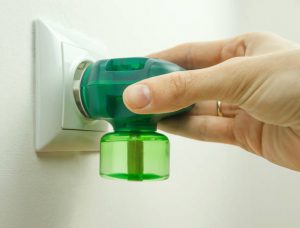Get the Thermacell E55 Rechargeable Mosquito Repeller to keep mosquitoes away from your patio or deck without moisturizing your skin with bug repellent.
The report concluded that the E55 stands out by really being successful after spending 55 hours investigating an industry full of hype, marketing, and disproved approaches (even popular ones like citronella candles). Its five rechargeable batteries are adequate to keep a bedroom-sized space free of mosquitoes for a whole evening—provided there is no breeze.

Thermacell makes numerous other optimal spatial repellents (mosquito-control techniques that protect an entire place rather than just a single person) in contrast to the E55 Rechargeable Mosquito Repeller, but none can equal the E55’s ease of use. It is far more convenient than butane-cartridge options due to its easy interface and lithium battery.
It includes a 12-hour repellent unit, but you can also get 40-hour units. In comparison to other mosquito control technologies, the E55 is much more efficient and user-friendly. Our previous pick, the Thermacell Radius Zone Mosquito Repellent Gen 2.0, has been replaced by this one. Although the different models are identical, the E55 has a bigger coverage area and a more user-friendly interface, as well as being less expensive.
We recommend the Thermacell MR450 Armored Portable Mosquito Repeller if you want a more robust and portable choice. The MR450, such as the E55, has proven insect repellent qualities, but it loses some of the E55’s better features, like a long-lasting repellent cartridge and rechargeable battery.
Instead, the MR450, like most Thermacell versions, requires a butane tank and 4-hour repellent pads that are less practical than the E55s’ features. When compared to merely recharging a battery, butane is better to burn over and difficult to refill. The pads don’t last as long as repellent cartridges, and it’s difficult to detect when they’re empty.
According to Facts & Factors, the global mosquito repellent market will expand by USD 9.7 billion between 2022 and 2028. The market’s growth pace is predicted to rise at a CAGR of 5.8%.

